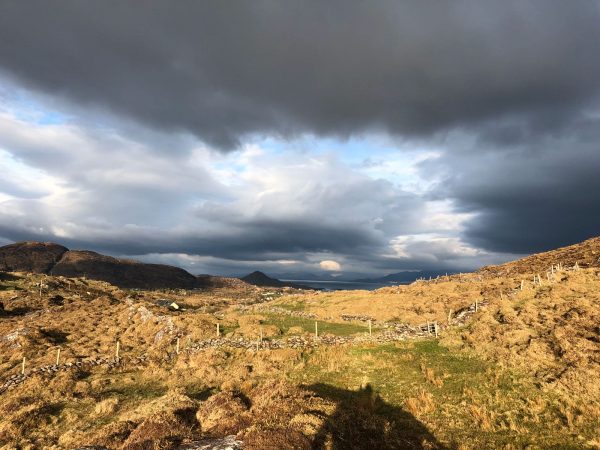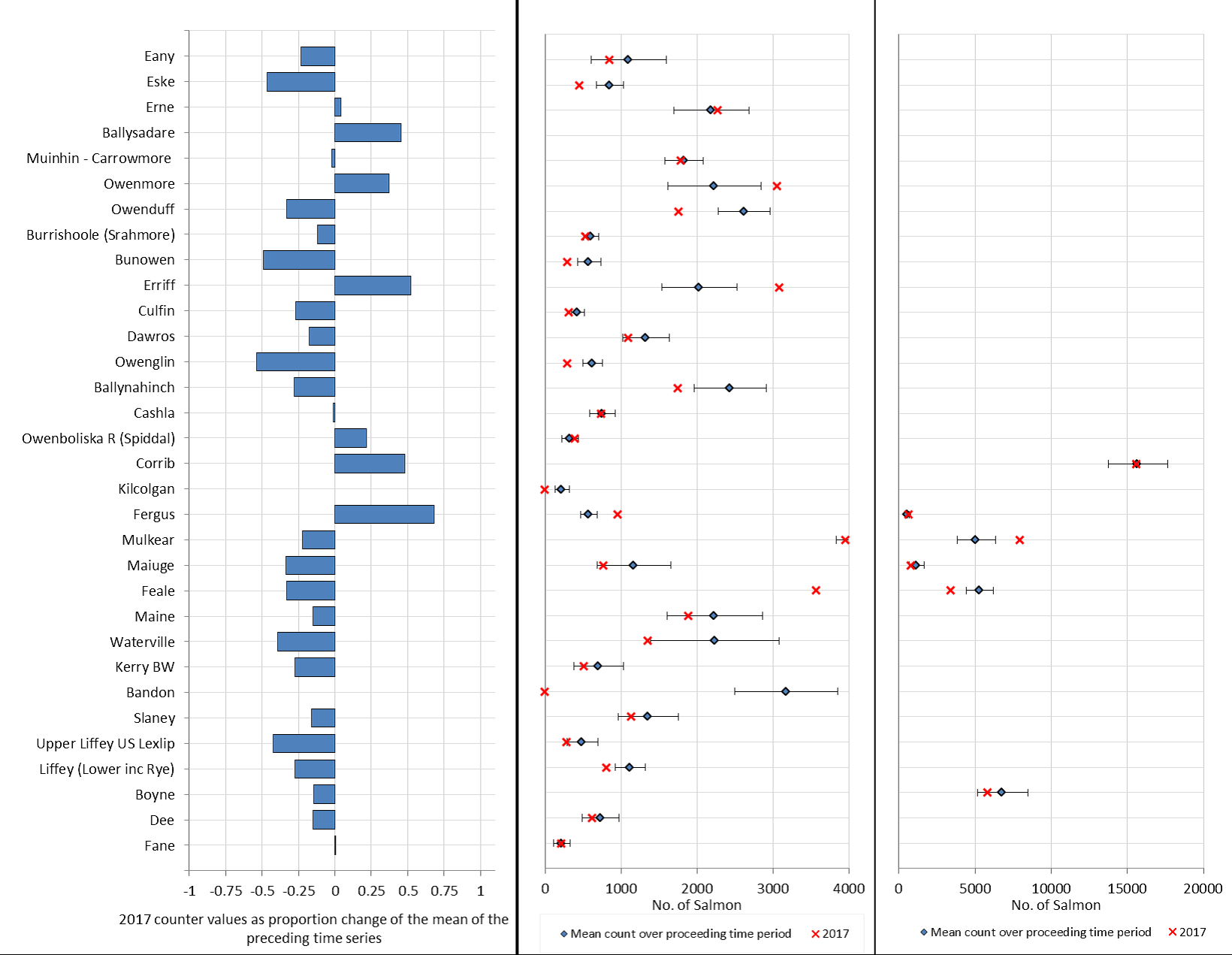Introduction
Salmon Watch Ireland Conference
Over the past number of years the Salmon Watch Ireland Conference day has examined a wide range of issues and concerns relating to the survival of Atlantic salmon and sea trout. The various topics were well received in general and hopefully have been an avenue whereby the attendees have gained a better understanding of the complex factors affecting wild salmonid populations in Ireland and indeed globally.
An outline of the conference materials is contained here under.
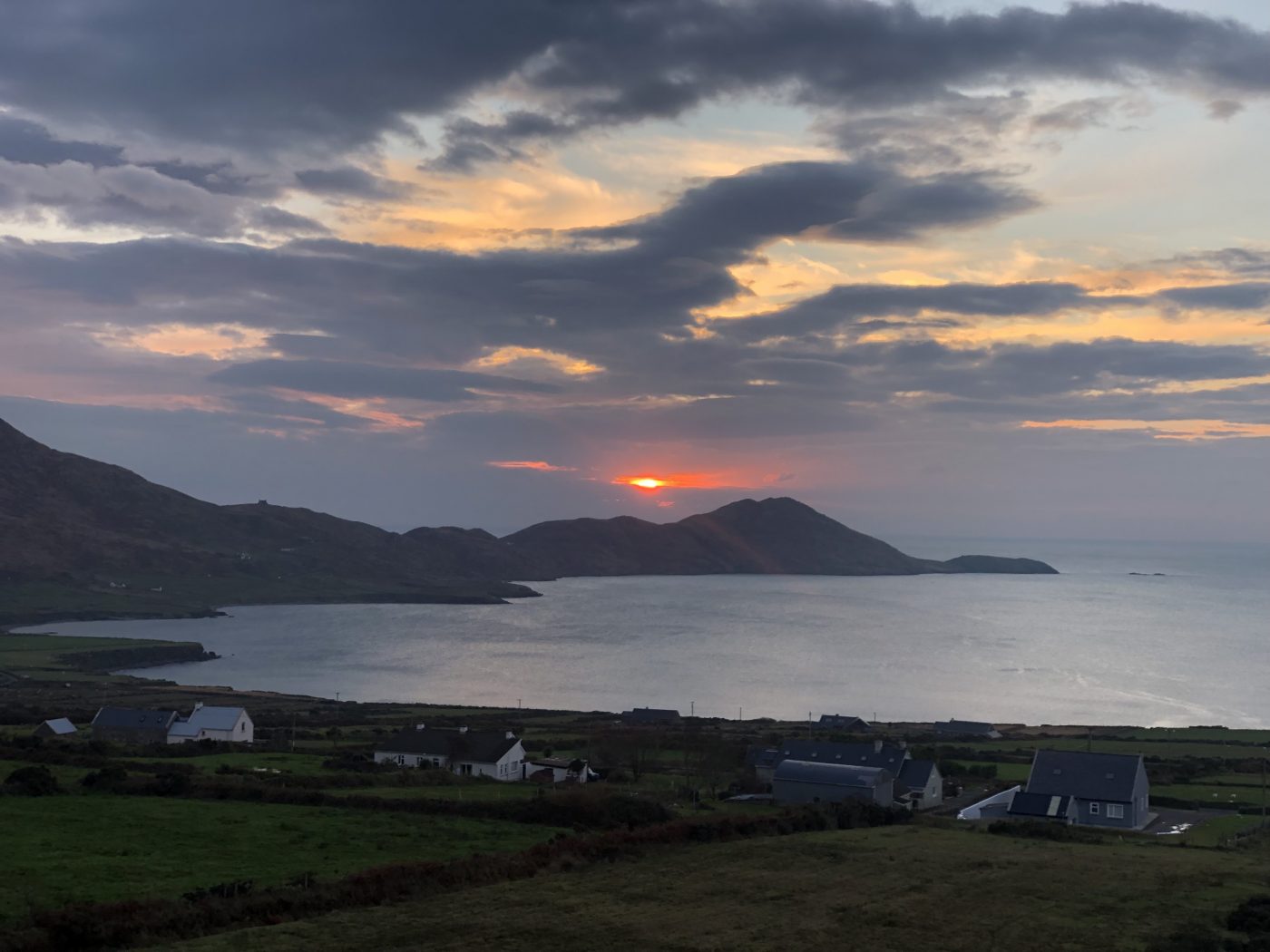
Warming ocean temperatures, changing plankton distribution, large scale pelagic fisheries and increasing ocean acidity leave Ireland's salmon with an uncertain future. Add to this the near coastal salmon farming industry and increased predation then salmon have a precarious future.
Salmon Watch Ireland Conference - Atlantic Salmon and Climatic Change
Salmon Watch Ireland Conference - Climate Change
Salmon Watch Ireland hosted their annual conference “Combatting the effects of climate change on Atlantic salmon stocks” in Galway on the 11th October 2014.
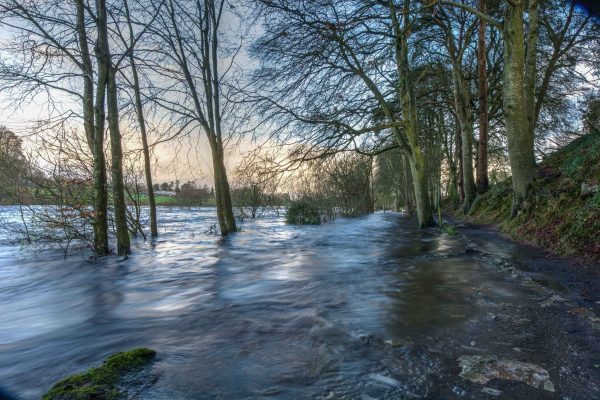
A swollen river due to heavy winter rainfall. Salmon redds in peril of wash out. Forecast of more frequent and intense winter rainfall in Ireland due to climate change.
The conference was attended by more than 70 delegates and presentations were given by speakers who have a wide ranging expertise in salmon ecology, fishery management, habitat enhancement and scientific monitoring of salmon stocks.
The main thrust of the presentations was to demonstrate how a warming climate could affect salmon stocks both in freshwater and at sea. The presentations were very effective in demonstrating how stakeholders might contribute towards habitat enhancement to mitigate the effects of a warming climate.
Presentations
The presentation by Dr. Russel Poole outlined the excellent monitoring work carried out at Burishoole in relation to salmon survival indices as well as the very real changes observed in freshwater which have resulted in younger smolts and other more subtle changes in size and condition of salmon juveniles.
It also highlights the very real dangers of winter extreme flooding and indeed the affect of increased acidification.
A presentation by Simon Ashe outlined the environmental management system employed on the Ballynahinch system and demonstrated the changing densities of salmon in the system compared to sea trout as a result of the virtual elimination of sea trout by salmon farming.
Dr. Ted Potter gave an insight into the Environment Agency policy on salmon in England and discussed the very real effects of drought, temperature and severe flooding on juvenile salmon stocks.
Dr Martin O' Grady gave an excellent insight into how stocks of salmonids could be improved with the removal of barriers being a consistent way of effectively increasing smolt numbers. He also demonstrated how shading can and does affect the productivity of salmonid nursery areas with tunnelling a major cause for concern.
The following presentations will help to explain how we can protect our salmon in a changing climate scenario.
Salmon Watch Ireland Conference - “Hatcheries and Stocking- have they a role in restoring salmon stocks”, investigated the potential role of stocking in restoring Ireland's dwindling stocks of Atlantic salmon.
Salmon Watch Ireland Conference - Hatcheries and Stocking
Salmon Watch Ireland hosted its annual conference on the 21st of November 2015 in the Ballsbridge Hotel, Dublin.
The 2015 conference, entitled “Hatcheries and Stocking- have they a role in restoring salmon stocks”, investigated the potential role of stocking in restoring Ireland's dwindling stocks of Atlantic salmon.
The official opening was conducted by Mr. Alex White, Minister for Communications, Energy, and Natural resources. Following introductory remarks from SWIRL chairman Niall Greene, five talks were given by experts in salmon ecology, conservation, and stocking. Each talk was followed by a discussion period in which attendees brought their own varied perspectives to the table, sparking some healthy debate.
Salmon Watch Ireland Conference - Official Opening
Minister Alex White began the proceedings with an enlightening description of the status of salmon within the context of medieval Irish Brehon Law. Mr. White stated that Ireland was one of the first countries to enshrine rights to salmon into its legislation, a historical fact which highlights the long-standing cultural and economic importance of the species to the Irish people. Against this background, Mr. White said, Ireland applies a precautionary approach to the conservation of wild salmon.
In particular, he assured the attendees, the Department of Communications, Energy, and Natural Resources would only support development which is found to be environmentally sustainable and which won’t damage wild salmon stocks. Turning his focus to the particular issue of stocking, Minister White stated that he is aware of serious concerns regarding the potential negative impacts of stocking on the genetics of wild salmon populations.
In keeping with the application of a precautionary approach to the conservation of wild salmon, Minister White concluded that the maintenance of genetic diversity within the species is of paramount importance. This key sentiment was echoed by the majority of the subsequent speakers.
Introductory Remarks
Niall Greene of SWIRL gave a brief introduction to the conference. During his introduction Mr. Greene explained that this year’s conference topic was chosen in response to increased debate over stocking issues which has stemmed from the worrying decline of wild Atlantic salmon throughout much of their range.
Although a number of very eminent fishery scientists were on hand to share their research and perspectives on the issue of stocking, no managers of fisheries with current hatchery programs were in a position to speak at the conference.
Talk 1
“To Stock or Not to Stock”
Dr. David Solomon
Dr. David Solomon’s talk began with a brief outline of the current state of British and Irish salmon stocks. From his perspective, the present status of these stocks is less dire than many people believe. A key point which Dr. Solomon and subsequent speakers emphasized was that salmon stocks are generally highly resilient, and are capable of bouncing back after periods of dramatic decline.
While, to his knowledge, no rivers in the British Isles have entirely lost their salmon stocks in recent decades, a significant number have actually reestablished populations that had previously been extirpated. According to Dr. Solomon, there are probably salmon spawning in more rivers throughout the British Isles at present than at any other time over the last 200 years. Water quality and migratory access are generally improving, and river specific harvest quotas are calculated and enforced.
Factors Within Rivers
Prior to any serious consideration of establishing a salmon stocking programme, Dr. Solomon told the audience, we must first identify the factors which currently limit the production of salmon within the river system and, if feasible, remedy these issues.
Such issues may include water quality, water abstraction, obstructions to migration, habitat degradation, altered flow regimes, or over-exploitation of the salmon stock itself. This approach, whereby you “look after the environment and the fish will do the rest”, was strongly advocated by all subsequent speakers at the conference and is widely regarded as the safest, most effective, most enduring, and usually the cheapest way of increasing salmon stocks. Of course, by improving the habitat within and around river systems there are additional benefits to local biodiversity, water quality, and overall ecosystem function.
In talk 4, Dry Stephen Marsh-Smith outlined an extremely ambitious and successful rejuvenation project he has been involved with on the river Wye. This project, which is currently ongoing, has allowed salmon to utilize huge areas of river that had been unsuitable or inaccessible to them for decades if not centuries.
The result has been a highly significant increase in fish numbers, angling catch rates, and utilized spawning habitat without any reliance on stocking programmes.
Against this background, the first question Dr. Solomon sought to answer is “Why to stock?” In response to this question, Dr. Solomon proposed 6 circumstances in which stocking might be considered, and gave his thoughts on the benefits and risks associated with stocking in each case. Broadly speaking, these 6 circumstances may be divided into 2 main categories:
Two Categories
Firstly, stocking where no wild population currently exists, and secondly, stocking in a river already populated by a wild population.
In the first category, it is highly likely that appropriate conditions for salmon spawning, rearing, or migratory access are currently absent from the river system (hence the absence of wild salmon). If such environmental conditions cannot be created, any stocking programme will fail to establish a self-sustaining wild population. The only realistic application of this approach is to “ranch” salmon for recreational or commercial fishing, a concept which was dealt with in detail by Dr. Ken Whelan in Talk 5.
The second category proposed, in which the aim is to augment the number of salmon within an existing wild population by establishing a stocking programme, is perhaps the most important within the context of declining wild Irish stocks. It is perhaps also the more contentious of the two applications of stocking.
While Dry Solomon believes the case against stocking in these circumstances is often overstated, in Talk 3 Professor Carlos Garcia de Leaniz presented compelling evidence that stocking in this circumstance is fraught with real long-term dangers to the native wild population.
A number of rivers were mentioned which had apparently successful hatchery programmes but which have given rise to uncertainty in regard to the role they played in rehabilitation. It was found that many fish which re-colonised these rivers (Taff, Neath and Tawe in South Wales, the Tyne in NE England, the Lagan in Northern Ireland, and the Clyde in Scotland) which had hatcheries were in fact strays from nearby rivers taking advantage of the removal of limiting factors. The remnants of a wild population in these rivers may also have contributed to the rebuilding of stocks (Tyne).
Another reason to stock examined was the manipulation of the genetic makeup of the stock with MSW salmon runs being increased in catchments to increase the runs of these fish. This needs to be well supervised and monitored to achieve success.
Finally the stocking of fry in rivers to attract straying salmon was mentioned as a possible method to provide pheromones to attract salmon into rivers.
Define the Problem
Dr. Solomon concluded his talk by telling the attending salmon enthusiasts that, “in deciding whether or not to stock, there is a need for absolute clarity in defining the problem, the objectives of any programme, assessing the limiting factors that are restricting natural production, identifying how the proposals will remove or bypass these limiting factors, and an assessment of the risks.” As such, the potential merits or risks of stocking must be assessed on a case-by-case basis.
TALK 2:
“Hatchery licencing and regulation in Ireland”
Dr Michael Millane, IFI
In the second presentation of the day, Dr. Millane of Inland Fisheries Ireland gave a concise and practical summary of the requirements involved in applying for hatchery licenses in Ireland. This was followed by a brief history of salmon management and stocking in Ireland, and an explanation of the current advice given by both IFI and NASCO in relation to salmon management.
In the Republic of Ireland, all salmon hatcheries are designated as aquaculture. The Department of Agriculture, Food and the Marine acts as the sole regulatory authority of aquaculture while the Minister for Agriculture, Food and the Marine is responsible for accepting or rejecting all hatchery applications. The criteria used to assess license applications were discussed in some detail, as were the legal obligations of the hatchery license holder.
River Categories
Dr. Millane told the audience that IFI echoes NASCO’s guidelines on stocking. These state that no Atlantic salmon reared in a fish culture facility should be released into a Class I river (Class I rivers, of which Ireland has many, are considered to have no significant human induced habitat alterations and no history of stocking).
Research has shown that in Class II and III rivers (which exhibit varying levels of habitat degradation) the long term cost of producing additional adult salmon and trout using habitat enhancement programmes is generally only a fraction of the costs one would incur while trying to generate the same increases through stocking programmes. There are also serious concerns over the potential negative impacts of stocked salmon on wild populations from a genetic, ecological, and disease transfer perspective.
Against this background, IFI’s advice on the enhancement of Irish salmon stocks is to support habitat enhancement schemes rather than artificial stock enhancement programmes which have the potential to detrimentally impact locally adapted wild populations.
Habitat Enhancement
Dr. Millane also outlined simple measures, such as gravel improvement and augmentation, can be implemented for modest cost which can lead to additional breeding habitat. Bank restoration by fencing and planting is also of great importance as it enables the river to return to its natural flow.
Narrowing river width by keeping cattle out of certain stretches can increase stream flows which prevents silt from settling on important gravel sections. Obstacles such as dams and impassible sections of river can be opened up to create more spawning and breeding areas.
Restoring rivers and the upper dendrite streams especially can have very significant benefits which increase the number of redds and spawning success. (IFI grant aid can be obtained in Ireland for river improvements and the benefits are considerable).
TALK 3
There are no salmon in the Yemen
Professor Carlos Garcia de Leaniz, University of Swansea
In the third talk, Professor Carlos Garcia de Leaniz emphatically argued against the use of stocking as tool for restoring wild salmon populations.
He began by citing his own research which found that, despite very high juvenile survival rates within the hatchery environment, 62% of hatchery pairings resulted in no adult returns at all. De Leaniz found that hatchery environments negate the effect of natural selection, allowing weak and mal-adapted fish to survive until they are released.
Up to 86% of hatchery parr were found to be asymmetrical, compared with only 10% in the wild, while body shape, coloration, and fin length of hatchery reared fish become increasingly mal-adapted for the natural environment the longer they live in a hatchery.
Increased Mortality
Once in the wild, hatchery-reared fish exhibit extremely high mortality rates compared with their wild counterparts. The vast majority of asymmetric individuals die within 50 days. Thus, the high survival rates initially encountered within the hatchery environment may largely be offset by dramatic mortality once the fish are released.
According to Professor de Leaniz, the more hatchery fish that are released in a river system, the higher the mortality rates they are likely to suffer due to the associated influx of predators such as herons, otters and cormorants. This influx of predators has the potential to negatively impact wild fish as well, including returning adults.
Another danger of stocking, according to Professor de Leaniz, is the suppression of sexual selection. It has been shown that the survival rates of cod increase dramatically in line with the number of males that were available to their mother during spawning.
Pairing in wild salmon, as with cod, is not random, and mate choice influences their offspring’s ability to fight pathogens and withstand parasites. Consequently, hatchery fish tend to suffer more from disease and parasites than wild fish.
Genetic Dilution
Professor de Leaniz argues that perhaps the greatest danger of artificial stocking to wild salmon stocks is the potential impact on the genetics of locally adapted wild populations. In order to highlight the significance of local adaptation to the survival of salmon stocks, de Leaniz cited a study in which salmon eggs from a Scottish river were reared alongside eggs from a Spanish river, after which the juveniles from both populations were released into the native river of the Spanish fish.
Over a 2 year period, the mean return rate of the “locally adapted” native Spanish fish was 7.85% while the “foreign” Scottish fish only achieved 2.88% returns. Stocking of hatchery-reared fish significantly diminishes selection against mal-adapted phenotypes, potentially leading to the genetic dilution of locally adapted populations when hatchery fish breed with wild fish.
This dilution, it is argued, has the potential to cause significant long-term declines in the survival rates of wild populations. As such, an evolutionary approach to salmon conservation is often recommended, aimed at maintaining the conditions necessary for natural selection to operate most efficiently and unhindered.
The morphological and physiological changes evident in hatchery raised fish in comparison to wild fish were increases in fat deposition which results in deepening of the body amongst hatchery-reared salmonids. This factor highlights the different selective pressures which fish experience in a natural or artificial environment and body shape of wild fish is significantly different with wild fish having a more streamlined shape allowing the wild fish to be more energetically efficient than hatchery reared fish with drag reduced and a lessening of energy used in swimming.
Fry in the wild also displayed darker parr marks than hatchery controls, and this would have made them more cryptic and less conspicuous to predators. The time required by released hatchery fish to change colour to avoid predators was demonstrated to be higher for stocked fish compared to wild fish.
Time in Hatchery - Divergence from Wild Salmon
Juvenile salmon stocked in the wild strongly diverged from hatchery fish with increasing time spent in the wild but did not appear to converge towards the body shape of wild fish, which remained morphologically differentiated from both hatchery controls and stocked fish. This point illustrates that time spent in a hatchery may permanently affect morphology and thus fitness to survive in the wild when compared to wild fish in a natural environment.
The fitness implications of such changes are likely to be adaptive to their environment which may affect swimming ability, feeding ability and predator avoidance.
The presentation demonstrated that hatchery salmon are morphologically different through body shape, forebrain development (Movement), erosion of fins and opercula causing mismatch with natural conditions and lacking predator avoidance skills
Hatchery-reared fish typically perform poorly in the wild and the results of this study indicate that this may be due to phenotypic mismatch, i.e. because hatcheries generate fish that are phenotypically mismatched to the natural environment.
The aspect of helping salmon populations by stocking eyed ova was discussed with Professor Garcia De Leanitz indicating that mate selection process is complex and our choice of mate may not be the fish of choice for the female. It is evident that females may select their mates by a complex series of factors to enhance genetic variability and dissimilarity.
Take Home Message
The take home message from this presentation must be that time spent in a hatchery will negatively affect survival of released fish and will impact negatively on population size. If hatcheries are to be used they must concentrate on releasing fish at earliest time with eyed ova preferred with certain reservations noted in choice of mate.
However the presentation noted that a natural wild system is the preferred option. It is obvious that asymmetry (fin erosion, opercula) in fish, under developed predator avoidance skills and poorly developed brain movement function will affect survival and population diversity and size.

A pristine lake in Kerry but along it's shoreline lies a reservoir for acidity namely a conifer forestry plantation. Due regard must be given to re-wild these areas and strategic planning to protect water resources should be a priority for government. Remember these areas cannot be replaced if they are destroyed.
Finally, de Leaniz made the point that over the years hatcheries have been used to mask declining salmon returns, and consequently the underlying ecological causes of these declines have often gone unaddressed.
“Hatcheries and Stocking- have they a role in restoring salmon stocks”, investigated the potential role of stocking in restoring Ireland's dwindling stocks of Atlantic salmon.
TALK 4
“An alternative to stocking, the rejuvenation of the Wye system”
Dr. Stephen Marsh-Smith OBE, Wye and Usk Foundation
Dr. Stephen Marsh-Smith of the Wye and Usk Foundation gave a refreshingly positive account of the rejuvenation of the Wye system and that of its native salmon population.
Interestingly, although the Wye has historically had 4 hatchery programmes, none of them are associated with a significant increase in salmon stocks. Instead, the first Wye hatchery was built in 1974, the year in which the Wye had its largest run ever, and was followed by a near total stock collapse (94% decline based on catch returns) over the subsequent 28 years.
Following its registration in 1995, the Wye and Usk Foundation’s first task was to identify factors limiting salmon production within the system. Through extensive sampling, monitoring, and mapping it was discovered that the devastating decline of the Wye salmon stocks was largely attributable to human influences within the freshwater system itself.
Water quality had deteriorated dramatically due to acidification from commercial forestry and acid rain. The use of sheep dip by farmers had severely damaged aquatic invertebrate populations, while abstraction had resulted in decreased flow rates.
Over exploitation of the salmon stock was rife and, perhaps most importantly, man-made barriers to migration such as weirs had cut off access to huge amounts of spawning habitat.
In the intervening years the Wye and Usk foundation have built 68 fish passes and removed 19 weirs, thus opening up 739 km of new habitat to salmon and trout. Acidification associated with forestry has been controlled, bringing significant areas of spawning habitat within tolerable PH levels. Phosphate levels are also much improved and river banks have been fenced off from livestock, allowing for recovery of degraded riparian vegetation and the aquatic habitat.
The work carried out by the Wye and Usk foundation has led to a dramatic increase in fish numbers and distribution throughout the river and its tributaries. Roughly 80% of the system is now considered to be in good condition for salmon, up from only 12% in 1996.
According to Dr Marsh-Smith, hatcheries are used to treat the symptom of declining salmon stocks rather than underlying problems. As a result of their reliance on hatcheries, many fisheries neglect to engage with the sort of rejuvenation work that has been carried out on the Wye in recent years.
Barriers to wild salmon production are allowed to persist and disproportionately expensive hatcheries become permanent features of the fisheries. Dr Marsh-Smith emphasized the importance of the active involvement of river trusts and fishery stakeholders in river rehabilitation initiatives.

There is no substitute for a wilderness land use. Natural conditions will result with proper land usage and adequate riparian zones.
TALK 5
A role for salmon ranching?
Professor Ken Whelan, Atlantic Salmon Trust
Professor Whelan described salmon ranching as “a type of aquaculture where juvenile fish are hatched, reared and released at the smolt stage, to mature in the open ocean and are caught on their return from the feeding grounds.” It is in no way linked with improving wild, spawning stocks, but is instead used as a way to produce fish to be caught commercially or in the recreational fishery.
One of the key arguments in favor of ranching is its potential to rapidly generate large numbers of salmon to the rod in rivers which currently have no run of wild fish. As such, it is argued, ranching could reduce harvest pressure from wild stocks and make anglers happy, all while generating revenue. Ranching of Atlantic salmon, though, is in no way guaranteed to be profitable.
Return rates from the ranching programme at Burrishoole in Co. Mayo have averaged 3.2% over the last 5 years. Due to the high cost associated with rearing salmon to smoltification, and a rod catch of roughly 1 in 6 returning fish, the price per grilse landed is about €300.
Given these figures, there are questions about the economic viability of ranching while marine survival rates are low. Of course, the success of Delphi Lodge in Connemara has proven that salmon ranching in Ireland can be economically viable.
Finally, due to the development of genetically distinct strains of salmon in the ranching environment, the cross breeding of ranched salmon and wild salmon has the potential to significantly alter the genetics of the native wild population, possibly leading to damaging mal-adaptation within these populations.
Conclusions
It would appear that river restoration and improvement is fundamental to the success of salmon and trout fisheries. It probably represents better value for money and human effort than producing juveniles (eggs, fry, parr) from hatcheries, especially where the conditions in rivers fail to provide good breeding and nursery conditions. As a first step therefore rivers should be restored to peak condition in order to support natural wild production.
Indeed it would seem to follow that the benefit of hatchery released juveniles would be greatest where the rivers into which they are released are in the optimum condition, and which are capable of providing nursery and spawning habitat.
Any action to stock with juveniles where the natural level of production is exceeded will cause displacement of natural fish which may in turn affect genetic integrity and natural levels of production.
If stocking is to be carried out, the earlier that a juvenile is released the better that a fish may adopt to its environment with a lessening of morphological divergence from the natural stock. The natural regeneration of a salmon stock may take time but the better the habitat and environment the quicker the process.
Overall with consideration of the economics of hatcheries, success rate of returns and decreased ability to reproduce the natural regeneration model is probably best suited to Ireland's rivers.
Unfortunately our rivers are generally compromised through bad planning and poor land use management and there is a legitimate case to help salmon stocks in compromised rivers by a supervised and scientifically directed program while addressing limiting factors.
There is also a legitimate case to re-seed rivers where juvenile numbers are low in comparison to historical levels. Some rivers with excellent habitat have suffered in recent years due to a lack of returning adults and a program (Ova / Unfed Fry) under strict supervision may help the situation.
Unfortunately with increasing rainfall intensity and the on-going call for flood relief drainage our rivers may require the use of hatcheries to minimise damage to natural salmon production.
Salmon Watch Ireland Conference - "Can salmon farming be regulated to effectively protect wild salmonids?"
Salmon Watch Ireland Conference - Can salmon farming be regulated to effectively protect wild salmonids?
The annual conference of Salmon Watch Ireland took place on the 18 February 2016 in Galway with each of the presenters outlining their perspectives relating to aquaculture and its regulation. The conference was attended by over 70 delegates who represented academics, legal profession, fishery owners and managers, state agencies, anglers and conservationists.
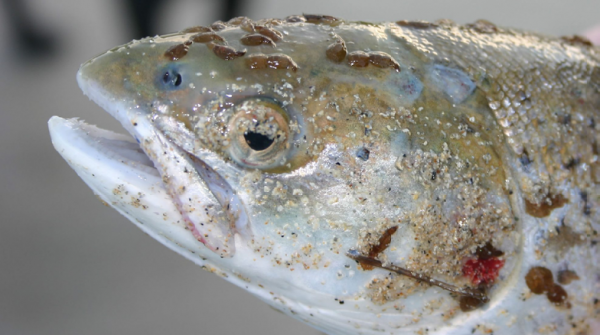
Sea Lice not only damage salmonids, they rob the environment of biodiversity causing a cascade of effects.
Salmon Watch Ireland Conference - Presentations
Mr Tony Lowes (Friends of the Irish Environment) gave an excellent speech to the conference which looked at the impacts of salmon farming over a wide range of areas from inshore to the wider ocean. The text of the speech which is available at Friends of the Irish Environment.is a very good insight how salmon farming is conducted without much concern for the wider environment. The speech really explains the many difficulties associated with the industry and how sustainability of this industry cannot be really achieved.
Faroe Island Perspective
Roar Olsen from the Faroes gave an excellent presentation which outlined their regulatory regime which focuses on hard law and penalties for farms which break the levels of sea lice on farms. These range from a large reduction of smolt stocking, mandatory fallowing and early harvest. They also have a policy of rewarding farms which comply by allowing them to increase smolt stocking.
Mandatory sea lice inspection by outside authority with fortnightly published results is also a feature with mandatory chemical parameter testing for dissolved oxygen. One trend discovered is the low level of dissolved oxygen on sea bed in their fjords'
Legal Aspects Salmon Farming
Eanna Molloy S.C addressed shortcomings of the Fisheries (Amendment) Act 1997 in relation the licensing of aquaculture projects, with particular emphasis on salmon farming.
He dealt with the lack of public information and participation involved in decision making regarding amendments, renewals, and revocation of licenses. Similar issues arise in relation to public information, participation in decision making, and access to review of decisions regarding new licences where adverse environmental impacts are apprehended.
He also compared the regulatory framework regarding veterinary products and pesticides applying to terrestrial agriculture to that which applies to salmon farming. There is a perception that there is inadequate oversight of the control and usage of pesticides on salmon farms, compared to the strict supervisory regulation of pesticides and chemicals in land based agriculture.
Aquaculture Knowledge Base of Local Communities
Dr. Liam Carr gave an excellent talk on his research regarding aquaculture. Primarily his research focuses in on measuring the local knowledge of stakeholder communities in the context of wild and farmed salmon in western Ireland.
Ireland is in a period of policy transition for managing marine resources, moving from single-sector approaches to broader strategies that more definitively acknowledge that resource exploitation carries socioeconomic and environmental impacts.
Policies like the Habitats Directive, Marine Strategy Framework Directive, and Maritime Spatial Planning Directive, along with national-level legislation and regulations, have provided a foundation for which to develop ecosystem-based management (EBM).
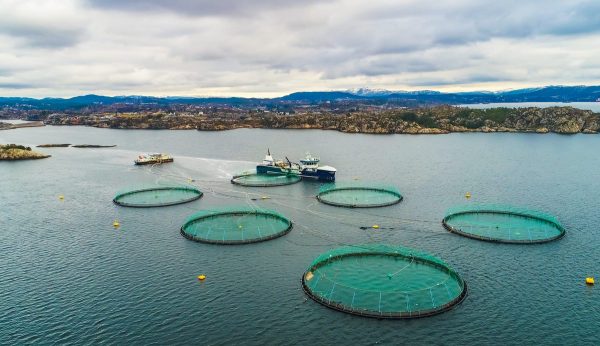
A reservoir for disease, parasites and a destructive influence on water quality and ecosystem functionality. This open net technology is harmful and outdated and must be changed.
Ecosystem-Based Management
A central component of EBM is stakeholder engagement and the incorporation of local knowledge in policy-making. Engagement is vital because local knowledge may offer the ability to identify key threats that would otherwise be unknown or unfamiliar to outside interests. Furthermore, the committed act of participation and inclusion can help build trust amongst stakeholders and sense of shared stewardship.
This research focuses in on measuring the local knowledge of stakeholder communities in the context of wild and farmed salmon in western Ireland. Eighty-six high-level, well-informed stakeholders from were interviewed to capture their particular perspectives, in a western Ireland context, surrounding: efforts to conserve and restore iconic wild Atlantic salmon and sea trout locally; key threats to wild Atlantic salmon and sea trout; and the broad suitability of farming salmon.
Five distinct groups emerged from the analysis, as well as specific areas of consensus agreement which might serve as starting points for trust-building and development of suitable EBM tools and regulations.
Respondents broadly believe that: the licensing process needs updating; Regulatory authority is fragmented and therefore ineffective at meeting EBM goals; Industry and regulatory transparency needs to improve; Salmon farming threatens the environment, particularly through infestations of the parasite Lepeophtheirus salmonis (sea lice), farmed fish escapees, and wastes associated with aquaculture production; And that these environmental threats must be aggressively managed alongside land-based threats that have deteriorated freshwater habitat or blocked migration paths for wild salmon and sea trout.
Policy Implications
Ireland is in the grips of two competing debates regarding wild and farmed salmon. One debate centres on the potential of doubling farmed salmon production, from current levels of just over 10,000 tonnes per year.
Even at 20,000 tonnes, Ireland would remain a bit player in the global production of farmed salmon, dwarfed by Norway (1.5m tonnes), Chile (700,000 tonnes), and Scotland (150,000 tonnes). The industrialisation of salmon farming in Ireland would carry the same impacts observed in Scotland and Norway that have imperiled their wild salmon and sea trout populations.
The second debate focuses on what role do salmon play in Ireland and communities along her western coasts? Atlantic salmon are culturally and historically important to Ireland, an iconic fish who can trace its origin and centrality to the Irish identity to the legend of Fionn Mac Cumhaill agus An Bradán Feasa (Salmon of Knowledge). Wild salmon and sea trout numbers in west Ireland are precariously low, and their recovery uncertain. Irish authorities have a unique opportunity to champion and employ stakeholder-informed EBM for wild and farmed salmon.
Adaptive, ecosystem-based, and community-inclusive policies should be enacted. Priorities include: science, monitoring and regulatory compliance; managing aquaculture alongside other sectors like tourism; and establishing site-by-site sea lice treatment trigger level standards that account for the intensity and scale of operations as well as the unique dynamics, processes, thresholds, and ecological carrying capacity of bays where farming occurs or is proposed.
Conference: "Has the Wild Atlantic salmon a future in Ireland"
Salmon Watch Ireland Conference - Has the Wild Atlantic salmon a future in Ireland
The annual conference hosted by Salmon Watch Ireland on the 21 April 2018 examines the ongoing debate as to whether the wild Atlantic salmon has a future in Ireland. It is an opportunity for all persons interested in this unique fish to engage with those concerned with the management of the resource. There will also be an opportunity to view the remarkable film "Lost at Sea" which should promote a large degree of discussion as to why Atlantic salmon continue to struggle in Ireland and elsewhere.
This year we have deliberately included a substantial period for discussion where views on how salmon abundance might once again be achieved. This will be an open forum where the views of the audience and panel of speakers on ‘What is to be done’ can be discussed.
Salmon Watch Ireland Conference - Presentations
The main emphasis of this presentation was to highlight the knowledge gained over the recent decades in regard to mortality factors of juvenile salmon.
The Inland Fisheries presentation was a very concise look at how our salmon stocks are in decline. Dr. Ciaran Byrne and Dr. Paddy Gargan answered questions related to the presentation in a very open manner. The situation is concerning and despite many gains regarding water quality and huge reductions in exploitation, the situation continues to decline. A small improvement appears to have happened in 2016 but overall trend is downward.
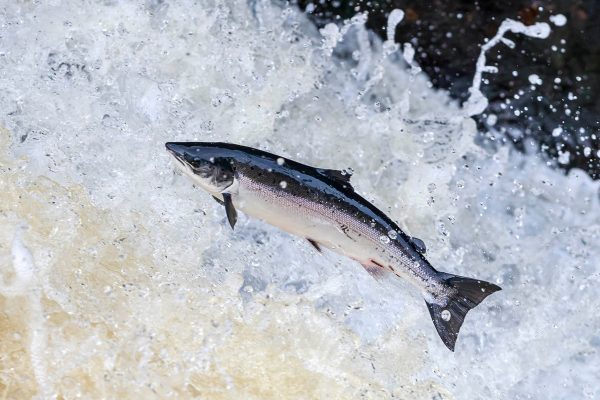
Wild salmon are now under severe pressure from habitat loss, climatic change and near coastal aquaculture activity. Exploitation is still too high and more fish being allowed to spawn is necessary to secure their future.
The presentation demonstrates the stock levels as they exist today. Unfortunately there has been a steady decline in stocks post 2007 as indicated by the counter network across the country.
It is not a very encouraging situation and is compounded by many factors both in-stream, near coastal and oceanic influences. With Ireland's human population growing aligned with increases in livestock farming and associated habitat compromise we are now really seeing a situation whereby the salmon population may be at risk through our anthropogenic influences. With the proposed expansion of aquaculture our salmon stocks are certainly at a highly increased risk.
One aspect of the presentation showed that we as a nation are still not releasing salmon to the degree of other close at hand countries and our catch and release figures indicate that less than 40% of fish are released.
An interesting statistic is that the average MSW salmon catch is now averaging out at 15% of total catch.
One slight ray of hope is that the counter figures for 2016 and 2017 demonstrate an upward trend which hopefully might herald a somewhat more positive future.
Inland Fisheries Ireland: State of Irish Salmon Stocks
- Marine growth rates varied among years, highest growth rates 2002, followed by 2003 and 2009. Lowest growth rates in 2008 (Very poor returns of 1 SW salmon in 2009 and 2 SW in 2010). 2010 saw a good increase in survival for 1 SW fish.
- Growth rates during the first period at sea were lowest for salmon of southernmost origin (this would include Ireland). This effectively illustrates that climatic change and altered ocean temperatures are affecting post smolt feeding at entry to ocean and along migration route.
- Inter-annual variation in wind fields, and thus the surface currents, altered the migration pathways. (Illustrates how important weather patterns in spring are)
- Likely suspects from headwaters to open ocean to be studied to indicate where mortality occurs
- Certain areas in ocean where change in migration can be affected to be examined
- Sharing the resources of the ocean with mackerel, herring and blue whiting as well as pressures from commercial exploitation of these stocks
- Increased mortality strongly linked to impacts of climate change (++Celcius ), SSC’s and changes in the food supply in the ocean
Salmon Stocks are Declining

